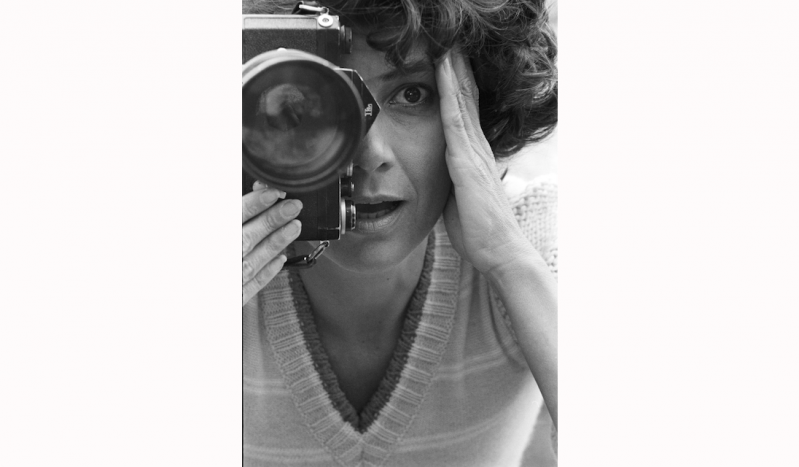Susan Wood was already established as a photographer when she had her first job on a movie set. Indeed, it was a photograph of hers in Sports Illustrated that so dazzled a public relations executive that she was hired by Paramount Pictures.
"Howard Hawks was going to Africa with John Wayne to make 'Hatari!,' " she recalled during a Zoom conversation. "My father said, 'Hollywood is a terrible place, be very careful, there's going to be all this nepotism, and they're going to be after you.' "
She ignored him, and took the job. Once in Africa, she soon realized that "everything my father said was absolutely true. Howard Hawks had a girlfriend who was a photographer. Elsa Martinelli had a boyfriend who was a famous Paris Match photographer. They weren't happy about my presence, but over time I worked things out, and I managed to produce such terrific stuff for them."
One was a photograph of a charging rhinoceros that made the cover of Argosy, a men's magazine.
A selection of her film-related images can be seen in "Susan Wood: On Location," opening tomorrow at the Sag Harbor Cinema in its third-floor exhibition space and continuing through Sept. 10. In addition, after a screening of "Easy Rider" next Thursday at 6 p.m., Ms. Wood will talk about her work with Giulia D'Agnolo Vallan, the cinema's founding artistic director.

Ms. Wood was under contract with Paramount, United Artists, and 20th Century Fox during a 10-year period when, in addition to "Hatari!" (1962), she worked on "Mirage" (1965), "Modesty Blaise" (1966)," "Dark of the Sun" (1968), "Easy Rider" (1969), and "Free the Army" (1971), among others.
The exhibition at the cinema includes photographs of Peter Fonda, Dennis Hopper, John Wayne, Jim Brown, Gregory Peck, Marcello Mastroianni, Monica Vitti, Donald Sutherland, and many more. Some images are focused less on one or two stars than on unguarded moments of life on movie sets.
Of her own role on a set, she said, "Very often you're regarded as a nuisance, and you're not allowed to click the camera during close-up scenes because the click will be recorded." Nuisance or not, the casual intimacy of many of Ms. Wood's photographs testifies to her ability to earn the trust of her subjects, no matter how renowned -- or notorious.
A landmark counterculture film, "Easy Rider" was directed by Hopper, produced by Fonda, and starred them both, along with Jack Nicholson, whose acting career it launched. Hopper and Fonda played two bikers who travel through the Southwest, carrying the proceeds from a cocaine deal. The film helped launch the "New Hollywood" era of the 1970s.
Ms. Wood came to "Easy Rider" through her friend Terry Southern, who wrote the film with Hopper and Fonda. At a New York restaurant, on learning Ms. Wood was about to travel to Los Angeles on assignment from Look magazine, Mr. Southern urged her to get in touch with Hopper and gave her two things: the title of the film, and the storyboard, a shot-by-shot illustration of how a story will progress.
Once in Los Angeles, Ms. Wood went to Hopper's house, only to find him just leaving, having been kicked out by his wife, Brooke Hayward. The two of them joined Fonda at the film's barely furnished office to discuss the storyboard before sending it to their producer. "They weren't quite happy with it," Ms. Wood recalled.
After assuring them she'd seen many storyboards and that filmmakers seldom stick to them once in production, Ms. Wood suggested they start talking through the film, and she recorded the conversation. "We played it back and it was terrific." When they wondered where to find somebody to transcribe it, "I said, don't even think about it, just take the tape, play it for your producer, and you'll come back with the check."
That's exactly what happened.
Things did not go as smoothly, though, once on location in New Orleans. "I think Dennis was upset. He was such a good photographer, I think he wanted to do everything himself. He wasn't happy seeing me with two cameras."
While Hopper proved difficult to work with, "I was very fascinated by the wonderful, warm relationship Dennis and Peter had. I came to realize that Peter was really shepherding Dennis through all this, sometimes at a cost to himself. I did not stay on with the film, but I did get some incredible pictures, not just of scenes from the film but also the relationships among the actors, all of whom were very giving of themselves."
Did she suspect it would become an era-defining film? "No, not at all. I was so annoyed at the shenanigans that I left without even saying goodbye. The reason there are so many never-before-seen images from that in my collection is that I just put the pictures away and thought I was through with that."
Fortunately, like the film, her images survive, and can be seen at the cinema, starting tomorrow.




